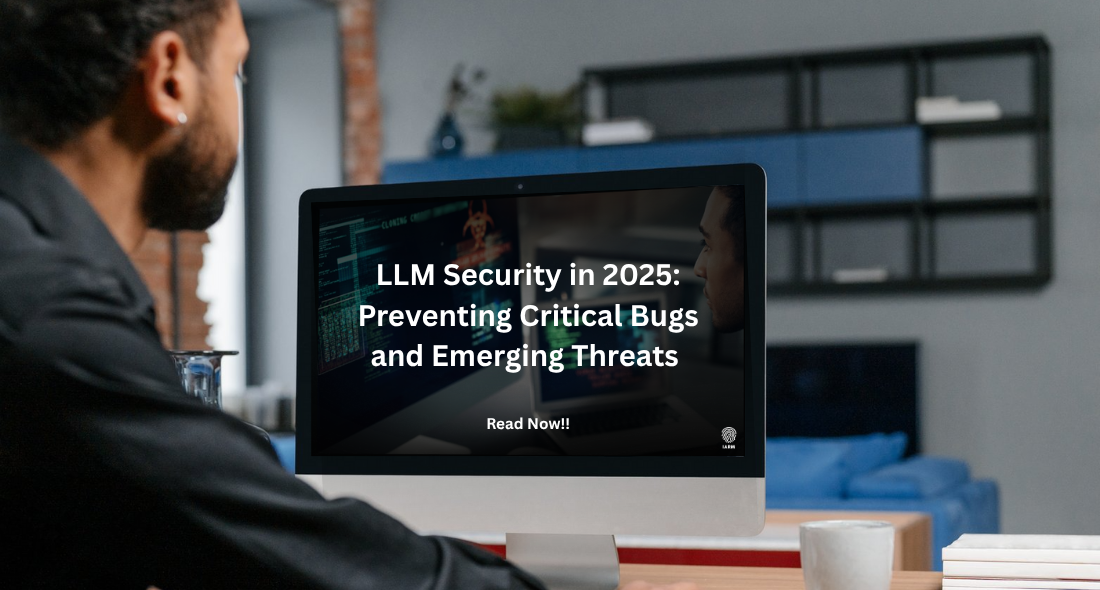Large Language Models (LLMs) are transforming the way organizations operate. They automate decisions, assist customers, and power essential systems. However, LLMs are complex and unpredictable, creating bugs that traditional software does not face. If these bugs are not addressed, they can lead to data leaks, unauthorized actions, misinformation, or complete system failure.
This blog highlights the most common types of LLM-specific bugs in 2025 and how to prevent them. Each section explains the bug, its significance, and practical security strategies to fix or reduce it.

Prompt injections occur when the model executes or responds to commands hidden in user input. This is a basic flaw in how LLMs interpret mixed instructions, which can be exploited to override system logic.
Why it matters: Untrusted users can control or influence the model’s behavior, potentially leading to privilege escalation or bypassing important logic.
How to prevent:
LLMs can leak private data they were trained on or exposed to, such as personal identifiers, credentials, or internal documents. This can happen either accidentally or through targeted probing.
Why it matters: Leaks can result in GDPR violations, compliance issues, and loss of user trust.
How to prevent:
Using unverified third-party models, datasets, or APIs can introduce backdoors or altered data into the LLM environment.
Why it matters: An untrusted model or dataset can become a hidden attack vector with significant consequences.
How to prevent:
Keep a Software Bill of Materials (SBOM) for visibility on dependencies — tools like sbomapp can help automate this process, making it easier to identify and manage vulnerabilities across your AI supply chain.
Training data poisoning involves inserting incorrect, biased, or malicious data into the training process, often leading to behavioral changes or deliberate misbehavior.
Why it matters: Poisoned data can subtly alter the model’s responses, leading to harmful, biased, or insecure results.
How to prevent:
LLM outputs that are used without processing can lead to injection bugs, misinformation, or unstructured data that disrupts downstream systems.
Why it matters: Un sanitized outputs can create security vulnerabilities or logic errors in the consuming application.
How to prevent:
LLMs with too much autonomy might take actions without user approval, such as making purchases, deleting data, or accessing protected systems.
Why it matters: Unchecked automation can lead to costly, irreversible actions without human validation.
How to prevent:
Bugs that expose internal system prompts or instructions—often through crafted user input—can reveal how the model is organized or controlled.
Why it matters: If attackers understand system logic, they can manipulate it more effectively.
How to prevent:
Vector similarity models may unintentionally reveal information about training data or semantic relationships.
Why it matters: Even without text, attackers can infer sensitive relationships from vectors alone.
How to prevent:
LLMs can provide confident but incorrect answers, leading users or systems to make poor decisions if they trust the output too much.
Why it matters: Overreliance can lead to serious operational errors, especially in medical, legal, or financial situations.
How to prevent:
LLMs are resource heavy. Attackers can use large prompts or high request volumes to exhaust memory or processing limits.
Why it matters: Resource exhaustion can disrupt services, deny access to legitimate users, or increase cloud costs.
How to prevent:
LLM models contain proprietary data, training efforts, and intellectual property. Without proper controls, these models can be stolen or reverse engineered.
Why it matters: Stolen models can be misused, resold, or used to impersonate your product.
How to prevent:
LLM bugs are fundamentally different from traditional software vulnerabilities. They stem from the intricate nature of machine learning systems—shaped by data behavior, language understanding, and probabilistic outputs. Addressing these risks effectively requires robust input/output controls, human oversight, secure infrastructure, and a deep understanding of the LLM lifecycle.
By integrating these strategies early in the design and deployment phases, organizations can build AI systems that are not only high-performing but also secure, reliable, and resilient against emerging threats.
IARM is a CREST-accredited pentesting company specializing in advanced security testing, including LLM Penetration Testing. Our team identifies and mitigates risks unique to large language models—such as prompt injection, data leakage, and model misuse—using proven methodologies aligned with the OWASP Top 10 for LLMs and MITRE ATLAS.
We help organizations securely deploy generative AI by providing comprehensive assessments, threat modeling, red teaming, and compliance consulting (ISO 42001:2023).